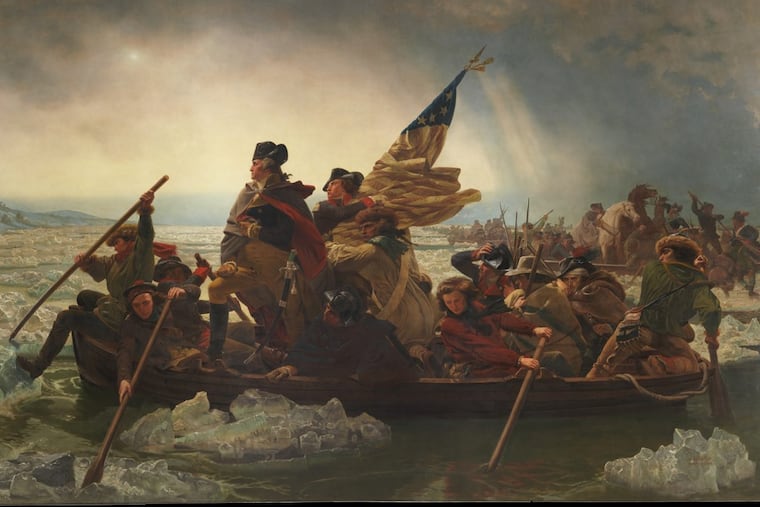How a painting of George Washington crossing the Delaware on Christmas went 19th-century viral
The famous portrait of Washington launching a sneak Christmas attack on the British wasn't even painted by an American. The artist was German.

When the painting "Washington Crossing the Delaware" was first revealed to the public in the early 1850s, it was a smash hit. It toured major cities, drawing crowds and gold medals. A poet wrote an ode to it. The artist quickly painted a second version, to be shipped off and exhibited abroad.
It isn't hard to see why art historian Barbara Groseclose calls it "the very emblem of patriotism for Americans." The enormous canvas depicts perhaps the most crucial moment in the War of Independence, Gen. George Washington's crossing of the Delaware River on Christmas night in 1776. After months of embarrassing failures, Washington ordered thousands of troops to stealthily cross the icy waters under cover of darkness. The next morning, in Trenton, New Jersey, their surprise attack on the Hessians (German mercenaries fighting for the British) provided a much-needed morale boost.
In the painting, Washington stands proudly in a boat, seemingly certain of America's destiny.
But here's the thing: That multicity tour the painting went on? It was in Germany – Berlin, Düsseldorf and Cologne, to be exact. The artist? A German. And the ode to it? Auf Deutsch.
That second version that was sent abroad? It was sent to the United States.
In fact, when Emanuel Leutze started his masterpiece, his intention was not to ignite the patriotic passions of Americans, but to inspire his fellow Germans to be as patriotic as he knew Americans already were.
In 1848, a wave of rebellion spread across Europe. It started small with a revolution in Sicily, and then grew. In Denmark, protesters demanded a formal constitution. French citizens forced the creation of the Second French Republic. In London, Karl Marx and Friedrich Engels published "The Communist Manifesto."
At the time, the German Confederation comprised dozens of independent states, dominated by two monarchs jockeying for control. During the revolutions of 1848, demonstrations of peasants, students and intellectuals sprang up throughout the states, demanding democratic reforms and touting pan-Germanism.
It was in this cauldron that Leutze decided to paint Washington. Although German by birth, he had spent his formative years in Philadelphia before returning to Düsseldorf for art school. Leutze had seen firsthand the power of seemingly disparate groups uniting for the cause of freedom, and he hoped his painting would inspire his countrymen to act like, well, countrymen.
Unfortunately for Leutze, the revolution dissolved faster than he could paint. An attempt at a national assembly called the Frankfurt Parliament collapsed under the weight of its intellectualism, and many "Forty-Eighters," as they came to be known, were forced to emigrate.
After its German tour, the first version of "Washington Crossing the Delaware" ended up in the Bremen art museum. In an odd twist of fate, it was destroyed by Allied bombing during World War II.
Leutze went with the second version to the United States, where the response was even greater than in the German states. A magazine review called it "incomparably the best painting yet executed of an American subject . . . full of earnestness without exaggeration." A newspaper said it was "the grandest, most majestic, and most effective painting ever exhibited in America." Mark Twain, ever the satirist, had a different view, calling it a "work of art which would have made Washington hesitate about crossing, if he had known what advantage would be taken of it."
Tens of thousands stood in line to see it at exhibitions in New York and the Capitol Rotunda in Washington. According to the Metropolitan Museum of Art, where the painting now resides, within a year nearly every home had a print, engraving or needlework version displayed on the mantel.
Eventually, Leutze resettled in New York, where Congress commissioned him to paint another American classic, the massive "Westward the Course of Empire Takes Its Way," which still hangs in the Capitol.
Even with his reputation as a painter of American patriotism cemented in history, Leutze still hoped that someday his birth country would be as unified as his adopted one. In 1859, he wrote to a friend: "I will always . . . to the German fatherland or to the spirit of Germany, as We think of it, remain true."